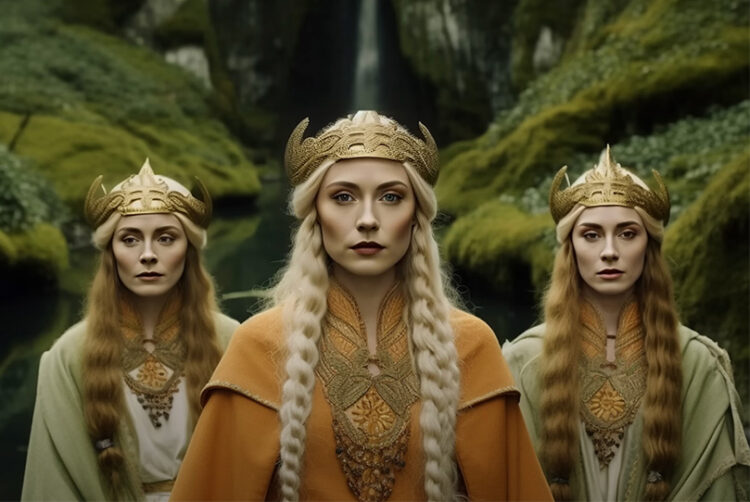A history of content and how tech will reshape it

Opinion
Tech developments will enable content to diffuse at the edges and shift in shape — and this requires an accompanying change in mindset.
Future media technologies will change the future of our content.
We’ll see a continuing shift from traditional concrete forms of cultural output with hard boundaries — the song, the book, the film — towards hazy clouds of content that diffuse at the edges and are constantly shifting shape.
This blurring of content forms, accelerated by new technologies, may require an accompanying change in mindset. We’ll have to think not only about the nature of the shifting content housed inside these formats, but how marketing messages are aligned to them — perhaps moving beyond the 30-second TV spot and matching banners and into more hybridised output.
To explain how this has come to be, we need to retrace the history of content.
From orality to literacy
Linguistic historian Walter Ong’s life’s work was analysing humanity’s transition from orality to literacy — the move from spoken word to the written word and the effect it had on society.
He discovered civilisations based on oral storytelling to communicate information caused cultural narratives to be fluid, evolving through omissions and embellishments in transmission. In short, tellers of tall tales make stuff up along the way that, over time, becomes lore.
In contrast, cultures that were early adopters of writing, and later the printing press, quickly achieved “fixity” of media. Content was glued into place, unchanging between reproductions and accurate in its copying. Literary societies could readily keep track of debits and credits, issue decrees and laws, and pass on religious learning without fearing corruption of the original message. Media became rigid.
For centuries, fixity of media became the standard. Your newspaper was my newspaper. Your TV show was my TV show. Your song was my song. Mass media could drive moments of shared cultural experience, thanks to a common frame of reference.
But the digital revolution, and latterly the AI revolution, means that we may be returning to an era of permanent flux, where media never reaches its final form and is increasingly prone to transition.
From remix to restoration
In his book The Inevitable, Kevin Kelly describes 12 forces crafting the shape of future society. One of those forces he labels “remixing”: the cross-pollination of old and new media or, rather, the requoting of elements of old culture in new contexts.
For Kelly, technology means media is never finished; it remains open to updates and new combinations — like pepping up a spaghetti bolognese with vegan sriracha sauce.
Admittedly, this is not a 21st-century idea. Remixing and sampling have been around since the 1950s and 1960s. So, too, the idea of extensions and augmentations.
The play Rosencrantz and Guildenstern are Dead — a retelling of Hamlet from the perspective of two incidental characters — was considered an innovation in 1966. Today, we might call it a “side-quel” — a word joining “sequel” and “prequel” to denote a story parallel to the main action.
Sticking with remixing, recent tech progress has seen it take on an extra dimension. Now, remixes shift across the boundaries of media format. Not content with requoting musical refrains within other music, we can now see video-based memes transformed into music memes, as amateur musicians soundtrack speeches, rants or everyday noises with heavy metal riffing or dance loops.
Audio-only performances are also gaining an extra dimension via retroactive animation or being used as the basis for a form of TikTok “comedy karaoke” where influencers “re-mouth” classic comedy routines.
Furthermore, technological progress allows us to revisit our own work and be increasingly interventionist and interfering. Rather than requote or refocus the action, we can now rewrite — or overwrite — the original works.
From restoration to rewriting
I remember watching George Lucas’s attempt to redo scenes from the original Star Wars trilogy using new special effects. Lucas always felt he had not caught the sprawling, chaotic nature of spaceport Mos Eisley in 1977 and dropped new CGI characters into the background in 1997 to restore his original vision. For me, the result was jarring.
Meanwhile, Sir Ridley Scott had two further cracks at Blade Runner. A director’s cut in 1992 involved some subtle edits to the 1982 original; the final cut in 2007 featured more tech-based updates — for instance, the face-scanning of Harrison Ford’s son’s mouth to address an error where lip-synching didn’t match dialogue.
Latterly, however, we’ve entered the era of dimensionalised entertainment — augmented reality, virtual reality (VR), gaming and the metaverse. Within these cloud-based worlds, all is dynamic, all is in flux and nothing is sacrosanct. We’ve moved from a “read-only world” to an “overwrite world”.
Early on, VR platforms like Art Plunge were “repainting” the Mona Lisa, building out a world beyond the existing frame where visitors could toy with da Vinci’s ingenious inventions — the most famous image in the world reborn as a virtualised interactive artefact.
More recently, and three years after its original launch date, Cyberpunk 2077 finally became critically lauded.
When first released in 2020, endless development overruns, together with overhype from E3 and CES, meant the game’s deep flaws and bugs did not land well with players.
But developer CD Projekt was able to retrospectively reframe its tentpole title, claiming it was always meant to be a very, very extended beta that was waiting to hit its stride. Which it did three years later.
Ultimately, Cyberpunk’s creators knew that a digi-literate audience would understand that modern media is never finished; the world would continue to grow and its characters would continue to live their virtual lives.
Now we are in the era of AI, this phenomenon will only intensify. We’ve already seen Family Guy reimagined as a 1980s live-action sitcom and Lord of the Rings directed by Wes Anderson. For now, this kind of escapade remains a novelty or curio, but what if we refine our use of the technique and put it to better use?
Could we recast older movies to update them with the stars of the moment? Could we revisit films shot in 2D, convert the “set” into a fully navigable 3D world and place the camera somewhere different? Could we make the modern equivalent of Rosencrantz and Guildenstern are Dead by asking an AI to help a Lucasfilm director reimagine The Empire Strikes Back from the perspective of Boba Fett?
Alternatively, as evidenced by accelerations in AI voice-cloning and lip-synching solutions, could we see the end of dubbed or subtitled films once Brad Pitt can speak fluent Mandarin — or at least appears to?
The future is truly multimedia
All this means brands of the future will need to be truly multimedia. That doesn’t just mean multi-channel, as indeed many brands are. Rather, the modern media environment means the lines between content forms are blurring — a podcast is a video, a video is a game, a game is a film — and that in turn means creative concepts and messaging opportunities need to be able to flex and morph.
It’s as if the content of the future has perfected its ability to transform at will from solid to liquid to gas — and, in some cases, can be all three at once. Thus, brands may come to appreciate that their assets and collateral can be “reversionned”, recast and relocated. Classic ads with great cultural resonance can be given a new lease of life, modernised or futurised for the next generation — all powered by rampant tech progress.
Nothing is fixed any more and everything has infinite life.
In which case, maybe I’ll come back and rewrite this article in 2050.
 Phil Rowley is head of futures at Omnicom Media Group UK and the author of Hit the Switch: the Future of Sustainable Business. He writes a monthly column for The Media Leader about the future of media.
Phil Rowley is head of futures at Omnicom Media Group UK and the author of Hit the Switch: the Future of Sustainable Business. He writes a monthly column for The Media Leader about the future of media.



